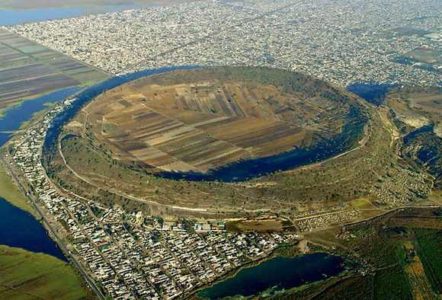By Jamie Holland-
UK geophysicist, Imperial College London’s Prof Joanna Morgan, co-led an investigation consisting of drilling into the Gulf of Mexico’s asteroid impact crater, with the aim of collecting different samples of rock.
The view was to use these samples to simulate the asteroid strike and measure just how exactly our Earth reacted to being hit at such a high speed by such a huge object from outer-space. What emerged from their study was the 12 km wide asteroid moving at approximately 18km/s vaporised thousands upon billions of tonnes of rock. The suggestion being that it must have caused the widespread injection of sulfurous minerals into the atmosphere, such as gypsum and anhydrite, as well as carbonates producing carbon dioxide.
Now in 2017, more detail is beginning to come to the surface regarding the enormous impact to throw our Earth into oblivion 66 million years ago. The team have established that, despite the sulfurous minerals being likely to have a long term warming effect, the consequence of so much vapor of this kind being thrown into the upper atmosphere would have caused an extremely rapid chill on the Earth. With the impact being equivalent to Hiroshima Bomb multiplied by 10 billion, Prof Joanna Morgan told the BBC that “we always thought there was this global winter, but with these new, tighter constraints we can be much more sure about what happened”. Morgan explains: “We now know, for example, the direction and angle of impact, so we know which rocks were hit. And that allows us to calibrate the generation of gases much better”. The team’s study suggests that the impact came from the north-east, colliding at a 60 degree angle with a shallow plot of sea.
This newfound knowledge is assisted by an experiment carried out by an independent research group early this year. The experiment, led by Julia Brugger from the University of Potsdam, Germany, concluded that the global annual surface temperature would have dropped by a mean of 26C, leading to the Earth being catapulted into temperatures below zero from anything between 3 to 16 years. “Julia’s inputs in the earlier study were conservative on the sulfur. But we now have improved numbers”, Morgan identified. “If Julia got that level of cooling on 100Gt of sulfur, it must have been much more severe given what we understand now.”
A result of the strike can still be visited and seen on Earth to this day, with the cenotes in Mexico being formed due to a weakness in the limestone covering the surface of the crater. With these new calculations coming to light this only marks the beginning of what is to be uncovered of the Earth’s prehistoric history and we should ask ourselves, are we one step closer to discovering the origin’s of human life on Earth?


